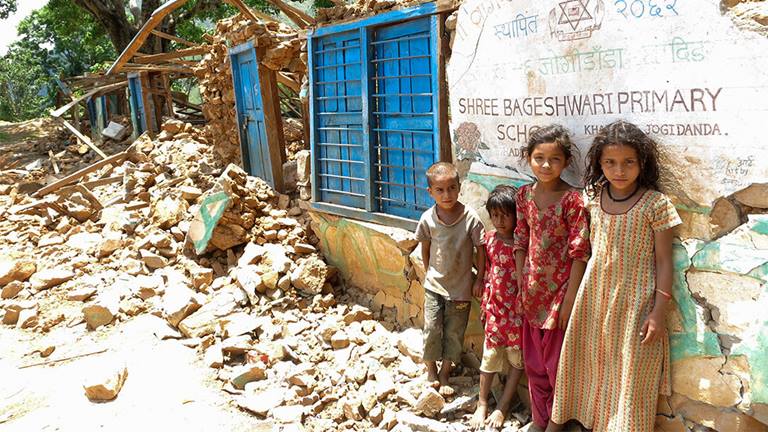Natural disasters: earthquakes
This resource focuses on how individual and communities prepare for, respond to and recover from life-changing natural disasters. It also explores the causes of earthquakes.

- Age:
- 11-19
- Type:
- Teaching package, images, videos, case studies
- Subjects:
- Geography
- Topics:
- Disasters and emergencies
This resource has been updated with a case study and extra source material on the Central Italy earthquake of 2016.
Every year, the Red Cross helps people from around the world who have been affected by natural disasters.
With content that is designed and differentiated for 11–19-year-olds, this Geography teaching package includes activities using case studies, images, maps, statistics, videos and eyewitness accounts.
The core resource includes embedded case study examples from the Nepal earthquakes of 2015, also drawing on examples from the earthquake in Haiti in 2010, giving a range of perspectives on the humanitarian impact of earthquakes. Fresh source material and case study content is now available on the Central Italy earthquake of 2016. These case studies can be used as part of compare and contrast activities.
We urge all geography teachers to download this free resource and encourage young people to think about the humanitarian impact of natural disasters. This invaluable resource pack has been created with technical input from the British Red Cross combined with the expertise of Geographical Association teacher consultants.Rebecca Kitchen, Secondary Curriculum Leader at the Geographical Association
Learning objectives
Learners will:
- gain understanding of different types of natural hazards and disasters
- explore the short- and long-term consequences of a natural disaster
- discuss the humanitarian response and what might make communities resilient.
Resource overview
- Introduction and curriculum links
Learn about how the resource has been designed to support your teaching and how the content maps to the Geography curriculum for 11–19-year-olds in Key Stage 3, GCSE and A Level in England; to the Scottish curriculum for excellence; and to the Welsh and Northern Ireland curriculums. - Session 1: Natural disasters
An introduction which sets the scene of the topic of natural disasters alongside general ideas of risk and hazard. -
Session 2: Earthquakes
This session looks specifically at earthquakes, with a focus on tectonic hazards. - Session 3: The impact of a natural disaster
Learners explore the immediate aftermath of a natural disaster like an earthquake, and the work of local and international Red Cross teams to support people affected. - Session 4: Recovery and resilience
Activities to explore how the Red Cross helps people rebuild their lives and consider the longer-term impacts of a natural disaster. The core resource includes embedded an embedded case study and source material on the Nepal earthquake in 2015. - Additional case study: Central Italy earthquake 2016
Use this additional source material to adapt your sessions to focus on the Central Italy earthquake or use it alongside the embedded Nepal case study to compare and contrast.
This very detailed case study will provide a timely resource. It is often time consuming to build a suitable case study from the many different websites reporting up toPaul Hunt, Geography teacher and subject lead
date hazards so this is very much welcomed.
Video: Nepal communities learn earthquake-resistant building
Credits:
About the author
Alan Parkinson is head of Geography at King’s Ely Junior – a centre of excellence for Geography for global learning.
With over 20 years teaching Geography to A level and winning awards for innovation and excellence, Alan previously worked for the Geographical Association as secondary curriculum development leader.
A freelance author and geographer, Alan has authored publications for the BBC, Collins, Digital Explorer and many more.
The photo shows children in Khalte village, Nepal, standing in front of their school, which was destroyed by an earthquake in 2015 (© Devendra Dhungana/ICRC).
Do you have a question about this page or want to give us feedback? Visit our Contact us page.

